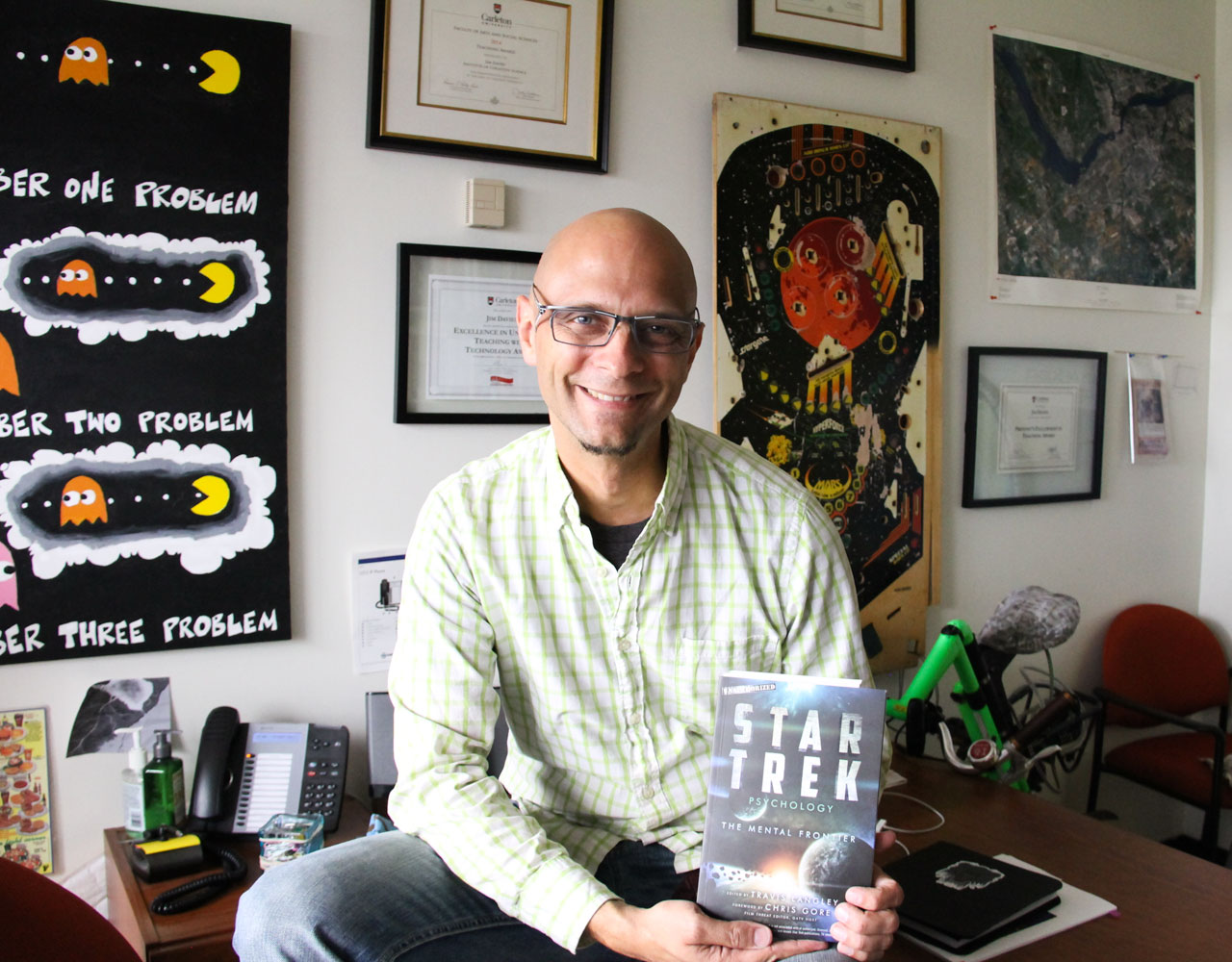Jim Davies, a professor from Carleton’s Institute of Cognitive Science, has contributed chapters to Star Trek Psychology: The Mental Frontier, about the psychology behind the aliens in the popular TV series Star Trek. The Charlatan sat down with Davies to discuss a bit about science-fiction psychology in popular culture.
The Charlatan (TC): How does your current research relate to your chapter in Star Trek Psychology: The Mental Frontier?
Jim Davies (JD): We’ve done some studies of creativity the way most people think about it . . . one of them we did a study on how creative people are when they’re creating aliens. So we gave them a blank piece of paper and asked them to make up an alien, to draw it. Previous work back in 1994, not by me, showed that people are very uncreative in this task, they’d just put a chicken head on a person or something; they’re usually always bisymmetric, their sense organs are in places you’d expect them in a human, like your two eyes and a nose underneath, they had an even number of appendages, so it was very much keeping to what Earth creatures are like.
TC: Why do you think [Star Trek creator Gene] Roddenberry made Star Trek’s aliens so human-like in contrast?
JD: In Star Trek, if you look at the aliens, they appear superficially very uncreative, they just have a different forehead, or they have different ears, they’re very human. It is a science-fiction, live-action television show, which means they have budgetary constraints, they can’t go all out. But, there is evidence that this was intentional. Roddenberry in his original pitch did talk about how they wanted the aliens to look kind of human because he had a vision of Star Trek as like a better world, and I think he wanted to make people be good to each other, and I think making the aliens human-like would make us empathize with them and all that stuff, and he’s right, science supports that. But, you can casually look at it and say the aliens just aren’t that creative, they look like people with a couple different changes.
TC: Why are the aliens in popular science-fiction so entertaining to us?
JD: Independence Day, Arrival, and Solaris are entertaining movies, but they’re not doing it the same way that Star Wars and Star Trek are doing it. In most science fiction, those aliens are characters, we think of them as people, they behave in ways that are understandable, like they get angry, they get hungry, they want things, they lie, so we relate to them like any other human character because they are human in a psychological sense. If you tried to make a real character out of the Arrival alien, it would be very hard, it’s not human in so many ways that it would be hard to have sympathy for it. So, maybe the lack of creativity is actually a feature that makes these shows better.
TC: You dabble in a lot of different interests—what fictional world is your favorite to write about?
JD: Star Wars. I’m almost obsessed with Star Wars, I adore it. The things that I love about Star Wars is the complicated plot, which is something I love about the prequels and some people don’t. I think how the whole thing turned into the empire is very fascinating, and I love how there are a zillion aliens, and I love that it’s such a rich world that you can tell all kinds of stories in it. It’s like Star Wars can handle it all.
Photo by Meagan Casalino






